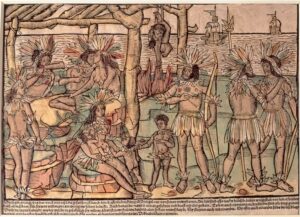
Meet Our Teacher Partners: Amy Parker
At Teaching American History, we focus on telling America’s story through historical documents because history functions for a nation as memory does for an individual. Without memory, an individual or a nation has no identity, and ultimately, no existence. Our teacher partners are the nation’s memory-keepers, passing on our national identity to the next generation as they help students develop the knowledge, skills, and virtues of self-governing citizens. They do this by engaging their students in reflection on and discussion about the documents and debates of America’s past in ways that connect the past to the present.
We are privileged to work with teachers of American history, government and civics from every corner of our nation, believing they do the most important work in America. In this occasional blog series, we’d like to introduce you to them, giving you a peek into their classrooms and the ways they use the documents and resources we provide, both to honor the work they are doing, and to inspire you as you tackle the same essential challenge of educating young citizens.
Presenting American History Through Multiple Lenses
Amy Parker has built a reputation for effectiveness at both the high school and middle school level. For 11 years, she taught Advanced Placement US History at a public high school on Florida’s Gulf Coast. During this time, she was awarded a James Madison Foundation fellowship to cover her Masters work. Taking the advice of other Madison fellows, she enrolled in Ashbrook’s program. As a one who grounds her own teaching practice in relationship-building, Parker found the MAHG program’s seminars congenial: they all involved conversations about primary documents. Her professors and fellow students became friends whom she could “bounce ideas off of.” She gained a broad repertory of primary sources to bring into her own classroom, displacing the textbook.
Her students liked reading and assessing the actual words of historical figures. They responded when Parker said, “I’m not asking you for someone else’s opinion; I’m asking for your own opinion of what you read. How does it fit with what you know was happening in America at the time?”
Learn more about Amy’s experience in the Master of American History and Government (MAHG) program and how she uses primary sources to build relationships with her students, and between her students and the nation’s past.


